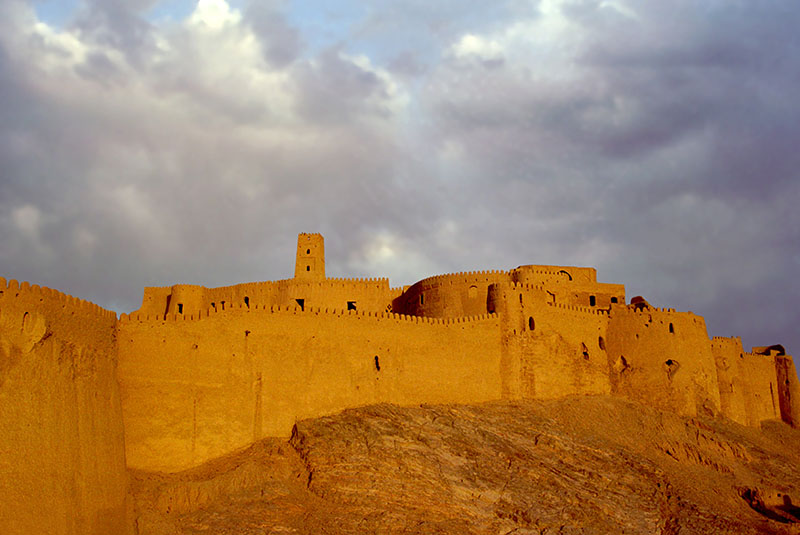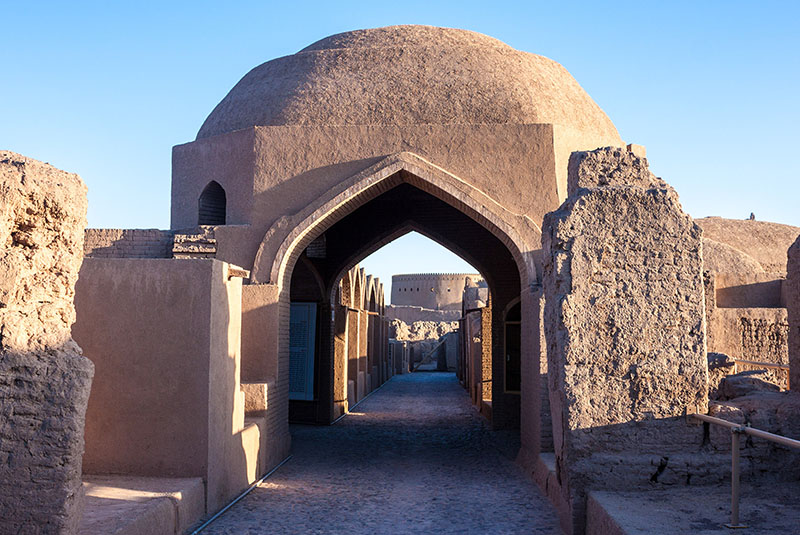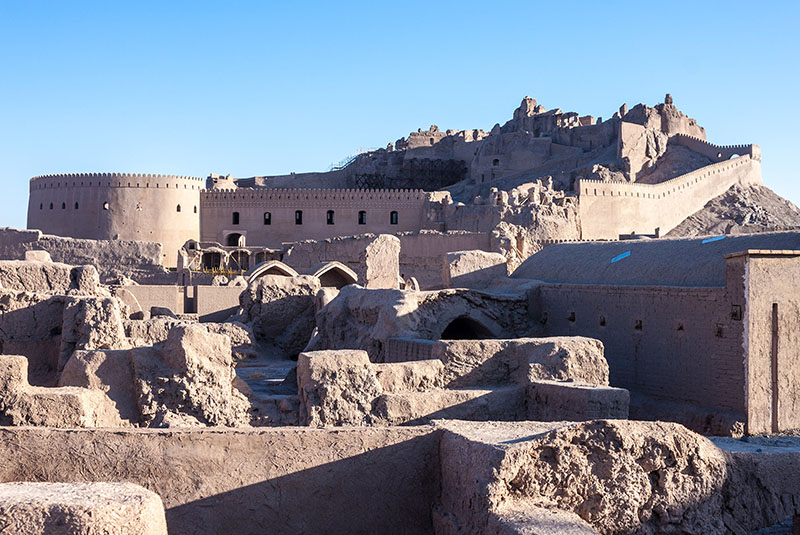Bam Travel & Tourist Attractions Guide
Iran is one of the oldest civilizations in the world, and therefore, there are a number of cities in the country which has more than thousands of years of history. One of these cities is Bam in Kerman Province. The city and its cultural landscape were listed as the World Heritage Site of UNESCO in 2004.
In this travel guide, we are going to briefly introduce the city of Bam, write about its location and geography, history, the best places to visit, its people and culture.
The Location of Bam
The city of Bam is located in a deserted area on the southern part of Iran, 195 kilometers to the southeast of Kerman. The city lies 1,060 meters above sea level.

The Climate of Bam
Bam has an arid climate and due to its proximity to deserts experiences extreme climate variations as a result. The city sometimes has the hottest summers and coldest winters in the country. The average temperature during the months of March till June has been recorded as 20°-25°C. These months are the most suitable for traveling to Bam.
The History of Bam

It is believed that the city was originated during the Achaemenid period from 6th to 4th centuries BC. The ancient citadel of Arg-e Bam has a history dating back around 2,000 years ago, to the Parthian Empire (248 BC–224 AD), but most buildings were built during the Safavid dynasty.
The creation and growth of the city were based on the underground irrigation canals, the qanāts of which Bam has preserved some of the earliest evidence in Iran. The archaeological discoveries of ancient qanāts in the south-eastern suburbs of Bam are datable to the beginning of the 2nd century BC.
If you interested to visit the historical part of Iran, you can book our cultural and historical tours.
Bam developed at the crossroads of important trade routes and became an outstanding example of the interaction of various influences.
The modern city of Bam was established later than the old citadel. The last ruler of the Zand Dynasty Lotf Ali Khan (1769-1794) fled to this city where he was ultimately captured by Agha Mohammad Khan (1742-1797), the first of the Qajar dynasty (1785-1925).
Read more: All you need about travel to Kerman
Bam, as a living city, began to decline with the invasion of the Afghans in the early 18th century and was abandoned around 150 years ago, serving as an army barracks until restoration work began in the 1950s.
Due to the location of the city, it was always considered an important place in the region. Textile and clothes in this region have always been famous.
It has gradually developed as an agricultural and industrial center, and until the 2003 earthquake was experiencing rapid growth.
Most of the city of Bam and the citadel were torn apart by a devastating 6.6 magnitude earthquake in 2003. However, extensive restorations started shortly after the earthquake to restore this masterpiece to its original state.
Famous People from Bam
Without a doubt, Iraj Bastami is one of the most famous Iranian people. He was a Persian classical musician and vocalist. Iraj Bastami was born in the year 1957 in Bam and passed away in the same city on December 26, 2003, in the Bam earthquake.
He started learning music at an early age by training with his uncle, Yadollah Bastami. After graduating from high school, Iraj came to Tehran where he learned singing style by Mohammad Reza Shajarian. After seven years, he continued the study of Fundamentals of Persian traditional music with Parviz Meshkatian.
He has collaborated with Parviz Meshkatian, Jalil Shahnaz, Keyvan Saket, and Hamid Motebassem. He has also worked with Aref Ensemble under the tutelage of Parviz Meshkatian.
After his death, his siblings established an institute under his name to introduce their brother and Parviz Meshkatian to the worldwide.
The best things to do and places to visit in Bam
The most interesting site of the city is the Arg-e Bam (Bam Citadel) with a history of 2,000 years at the Parthian Empire (248 BC – 224 AD). However, most of the buildings were built during the Safavid dynasty.
It was the crossroad at the most important trade routes. The Citadel is the best example of a fortified medieval town built in mud layers. Unfortunately, most of the citadel was destroyed after the earthquake of 2003.

Arg e Bam can be divided into two main sections. The rulers’ quarters are located in the heart of the citadel and is also located on an elevated floor to make overseeing the city more convenient.
The medieval town of Bam is located near the citadel entrance and consists of more than 400 houses in different sizes, a bazaar, and several other identified public buildings. Like most fortified citadels, the medieval town of the arg was used as a shield to make the ruler's quarters immune to potential attacks.
The modern city of Bam is well-known for its agriculture and industrial center. Dates and citrus fruits of the city are one of the best in the country and you can enjoy the beautiful gardens of date and citrus in the city.
In addition to agriculture, Komach-e Sahan, Kolompe and Ghavout are the famous sweets from the city. The main ingredient of those sweets is date and flour.
Patehdoozi is also a magnificent needlework art from the city. It is done by silk on wool textiles with traditional patterns like a flower, paisley, cypress tree, and sun.
Read more: A Tour of Iran's Most Famous Architectural Landmarks


Comment
Leave a Comment